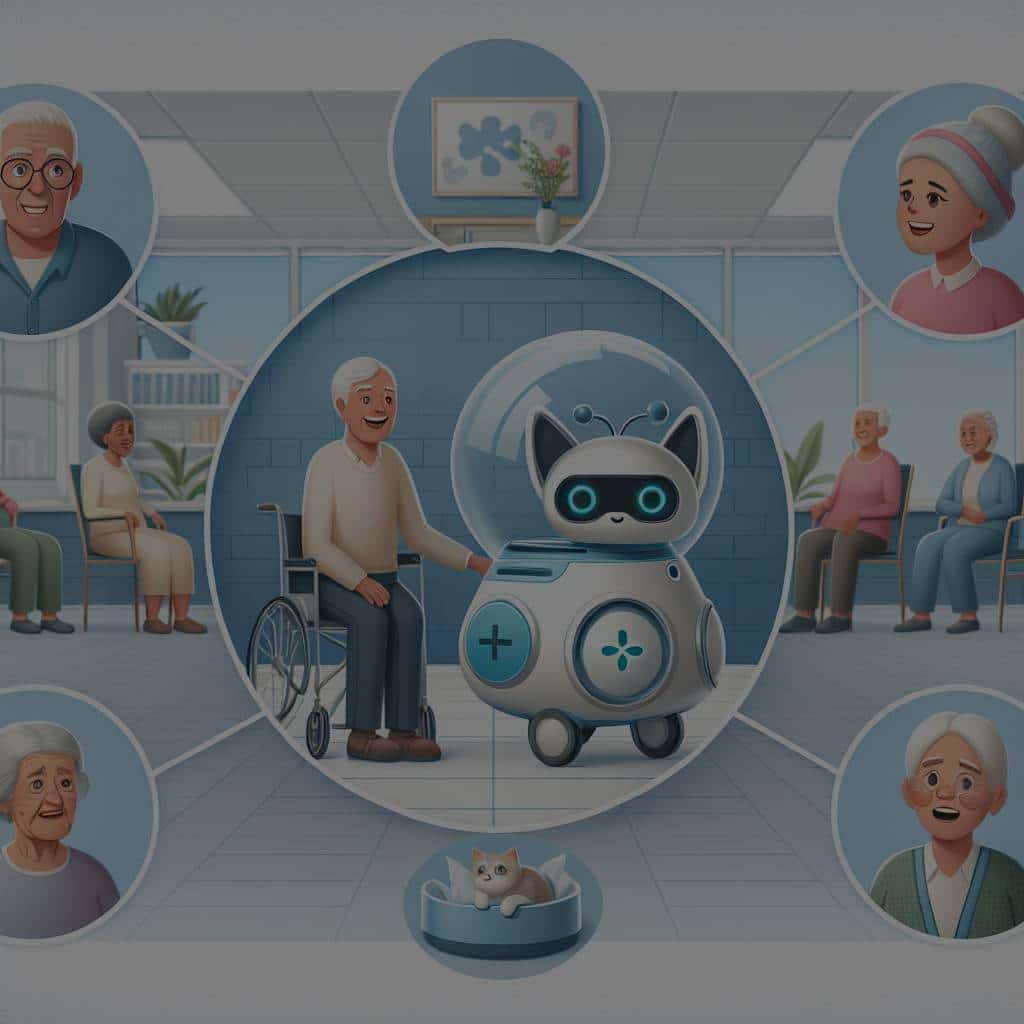Progress in technology has seen a rise in the development and use of robotic pets – an innovative solution to the challenges faced by older adults in long-term care facilities. These pet robots, designed to engage with their owners similarly to a real pet, present numerous benefits in terms of health, companionship and dementia care. This article delves into the impact of robotic pets on elderly adults, focusing on their benefits and the role they play in improving their quality of life.
The Growing Role of Robotics in Pet Care
Robotic technology is gaining recognition for its potential in various sectors. In the pet care industry, robotic pets have emerged as a significant development. These lifelike creatures aim to provide companionship to people who may not be capable of caring for a live pet.
Topic to read : How Does the Design of Healing Gardens in Hospitals Affect Patient Outcomes?
A notable example is the Paro, a therapeutic robot designed in the form of a baby harp seal. This robot is widely recognized in medical circles and is extensively used in various countries. Its purpose is to stimulate patients with dementia and other cognitive impairments, providing a soothing and interactive experience.
Another trend in this area involves dogs — the most popular choice for a pet. Robotic dogs are designed to offer the same companionship as their real-life counterparts, without the responsibility and care that comes with a live animal. Many older adults and residents in long-term care facilities find these robot dogs a valuable companion.
Also to read : Can the Use of Medical Clowning in Pediatric Care Reduce Anxiety and Pain Perceptions?
The Intervention of Robotic Pets in Dementia Care
Scientific studies and interventions have examined the role of robotic pets in dementia care. Scholars have included robotic pets in controlled environments to assess how these pets affect the health and well-being of adults with dementia.
A study published by CrossRef highlighted that dementia patients showed evident signs of improved mood and reduced agitation after interacting with a robotic pet. Their heightened engagement and positive response are indicators of the potential of these robotic companions in dementia care.
Moreover, these robotic pets can function continuously, providing constant companionship, unlike human caregivers who may need rest. This round-the-clock interaction can considerably enhance the quality of care for dementia patients.
The Health Benefits of Robotic Pets for Older Adults
The health benefits of robotic pets for older adults extend beyond dementia care. These robotic companions can contribute to the overall health and well-being of older adults, particularly those residing in long-term care facilities.
Research has shown that interacting with a pet, whether real or robotic, can lower blood pressure, reduce stress, and improve mood. It also stimulates physical activity, as the residents often engage in petting and grooming the robot, which can contribute to improved motor skills.
In addition, a study published by scholars indicated that elderly adults who interacted with robotic pets reported less loneliness. The companionship provided by these pets can significantly enhance their mental well-being.
The Acceptance of Robotic Pets by Older Adults
The acceptance and adoption of robotic pets by older adults have been generally positive. These residents find joy and comfort in these companions, and the lifelike interactions help create an emotional bond.
The appearance and behavior of the robotic pets are designed to mimic real pets, making them easily acceptable by the elderly. The robotic dogs, for instance, can bark, wag their tail, and respond to touch, creating a realistic pet-like experience.
It’s important to note that while robotic pets have their benefits, they are not meant to replace human interaction or traditional pet therapy. Instead, they serve as a supplemental form of care that can greatly benefit older adults.
Incorporating Robotic Pets into Long-Term Care Facilities
Incorporating robotic pets into long-term care facilities can be an effective strategy to improve the residents’ quality of life. It provides a practical solution for those who may not have regular visits from family or friends, or who are unable to care for a live pet.
The adoption of this technology, however, should be paced and gradual. It’s crucial to ensure that the residents are comfortable and receptive to these robotic companions. Providing education and awareness about these pets can also help in their acceptance.
Looking ahead, further research and development are necessary to enhance the features and capabilities of these robotic pets. As technology continues to advance, the potential benefits for older adults can only increase.
In conclusion, the incorporation of robotic pets into long-term care facilities presents a promising solution to the challenges faced by older adults. Their companionship, health benefits, and therapeutic properties make them an invaluable addition to the realm of elder care.
Integrating Robotic Pets in Elderly Daily Activities
Amongst the many innovations in elderly care, robotic pets continue to make a significant impact. Studies from CrossRef and Google Scholar have shown that the use of these companion pets can greatly enrich the daily activities of older adults, particularly those in long-term care facilities.
These pets, including the popular robot Paro, are designed to interact with their owners in a manner similar to real pets, engaging them in playful activities such as fetching, petting, or even responding to commands. This quality enables older adults to engage in physical activities that they might otherwise avoid due to age, frailty, or fear of falling.
Older people are known to experience a decline in mobility with age. This lack of physical activity can lead to health issues such as obesity, heart disease, and depression. However, the presence of a robotic pet can encourage them to move about, enhancing their physical health and prolonging their independence.
Integrating robotic pets into the daily routine of older adults can not only provide companionship but also promote a sense of purpose and responsibility. This is especially beneficial in long-term care facilities where older adults may feel isolated or disconnected from their family members or the outside world.
Emphasizing the Role of Robotic Pets in Mental Health
Mental health is a significant concern for older adults, especially those in long-term care facilities. With the potential of reducing problems such as agitation, depression, and loneliness, robotic pets are emerging as a notable solution.
A study published on PubMed CrossRef revealed the positive effects of companion pets on the mental health of older adults. The study found that elderly adults who interacted with a robotic pet showed lower levels of stress and anxiety compared to those who did not.
Introducing these pets to people with dementia has shown remarkable results. The robotic pet’s interactive features and responses can trigger positive memories and emotions in these individuals, helping manage their condition and improve their quality of life.
While the role of robotic pets in mental health care is promising, it’s critical to remember that these pets are meant to supplement traditional care methods rather than replace them. They are tools to foster engagement and interaction, not a substitute for human companionship or professional mental health care.
Conclusion
The use of robotic pets in long-term care facilities is revolutionizing elder care. These pets offer physical and mental health benefits, promote daily activity, and provide companionship, all of which contribute to the improved quality of life for older adults.
The gradual acceptance of robotic pets among older people, along with positive reviews from family members, caregivers, and medical professionals, is encouraging. Future advancements in technology will undoubtedly lead to more refined and lifelike robotic pets, making them an integral part of elderly care.
Given their numerous benefits, investing in robotic pets for long-term care facilities is a step forward in improving elderly care. These pets not only provide companionship but also contribute to the overall well-being of the residents, making their golden years more enjoyable and fulfilling.






